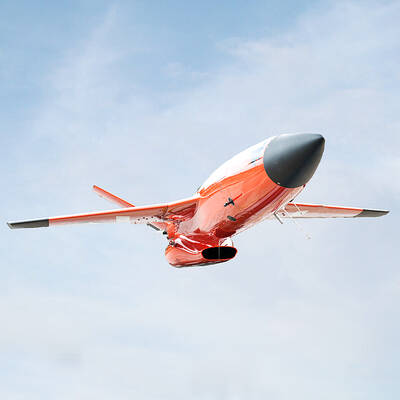The Justices of the Constitutional Court rejected a petition yesterday aimed at halting plans to execute the 40 inmates that remain on death row.
“The defendants are given the opportunity to defend and express themselves during the trial process ... There is no violation of the Constitution in the convictions,” the Constitutional Court said in a statement.
“The request to suspend the executions is dismissed, as the court declines to review the case,” the court said.
“Execution of the death row prisoners does not violate the two United Nations covenants that Taiwan has signed,” the court said, in a reference to the International Covenant on Civil and Political Rights and the International Covenant on Economic, Social and Cultural Rights.
The covenants were passed by the legislature on March 31 last year and later signed into law by President Ma Ying-jeou (馬英九).
The petition was filed by the Taiwan Alliance to End the Death Penalty, on behalf of the 40 death row inmates.
Taiwan executed four of the 44 prisoners on death row on April 30, the first executions to be carried out since December 2005.
The Ministry of Justice said the four men had been tried and convicted of “grave offenses such as lethal kidnappings and murder” and their sentences had been confirmed by courts at various levels.
The executions came five weeks after former minister of justice Wang Ching-feng (王清峰) resigned amid a political storm sparked when she declared that she would not sign any death warrants during her term in office.
The justice ministry yesterday said it respected the Consitutional Court’s decision.
The Taiwan Alliance to End the Death Penalty, however, said in a statement it was saddened by the decision, which it described as “deeply regrettable.”
The non-profit organization, which has a team of volunteer lawyers, said it would make further comments on the judgment after it receives official confirmation of the decision from the Judicial Yuan.
Legal experts said the ministry could resume the execution of death row inmates at any time.
Minister of Justice Tseng Yung-fu (曾勇夫) said yesterday there was no timetable for carrying out more executions despite the court’s decision.
The execution date of the 40 inmates currently on death row would be based on the gravity on their crimes, he said.
In a meeting with the Chiayi District Prosecutors’ Office, the minister said a plan to prioritize the execution of inmates whose crimes involved brutal murders, including multiple deaths or killings within the family, was under consideration.
His comments came shortly after a report appeared in the Chinese-language United Daily News claiming that the ministry could carry out a second round of executions before the end of the year.
Taiwan reserves the death penalty for serious crimes including aggravated murder, kidnapping and robbery.

‘WIN-WIN’: The Philippines, and central and eastern European countries are important potential drone cooperation partners, Minister of Foreign Affairs Lin Chia-lung said Minister of Foreign Affairs Lin Chia-lung (林佳龍) in an interview published yesterday confirmed that there are joint ventures between Taiwan and Poland in the drone industry. Lin made the remark in an exclusive interview with the Chinese-language Liberty Times (the Taipei Times’ sister paper). The government-backed Taiwan Excellence Drone International Business Opportunities Alliance and the Polish Chamber of Unmanned Systems on Wednesday last week signed a memorandum of understanding in Poland to develop a “non-China” supply chain for drones and work together on key technologies. Asked if Taiwan prioritized Poland among central and eastern European countries in drone collaboration, Lin

The Chien Feng IV (勁蜂, Mighty Hornet) loitering munition is on track to enter flight tests next month in connection with potential adoption by Taiwanese and US armed forces, a government source said yesterday. The kamikaze drone, which boasts a range of 1,000km, debuted at the Taipei Aerospace and Defense Technology Exhibition in September, the official said on condition of anonymity. The Chungshan Institute of Science and Technology and US-based Kratos Defense jointly developed the platform by leveraging the engine and airframe of the latter’s MQM-178 Firejet target drone, they said. The uncrewed aerial vehicle is designed to utilize an artificial intelligence computer

Renewed border fighting between Thailand and Cambodia showed no signs of abating yesterday, leaving hundreds of thousands of displaced people in both countries living in strained conditions as more flooded into temporary shelters. Reporters on the Thai side of the border heard sounds of outgoing, indirect fire yesterday. About 400,000 people have been evacuated from affected areas in Thailand and about 700 schools closed while fighting was ongoing in four border provinces, said Thai Rear Admiral Surasant Kongsiri, a spokesman for the military. Cambodia evacuated more than 127,000 villagers and closed hundreds of schools, the Thai Ministry of Defense said. Thailand’s military announced that

CABINET APPROVAL: People seeking assisted reproduction must be assessed to determine whether they would be adequate parents, the planned changes say Proposed amendments to the Assisted Reproduction Act (人工生殖法) advanced yesterday by the Executive Yuan would grant married lesbian couples and single women access to legal assisted reproductive services. The proposed revisions are “based on the fundamental principle of respecting women’s reproductive autonomy,” Cabinet spokesperson Michelle Lee (李慧芝) quoted Vice Premier Cheng Li-chiun (鄭麗君), who presided over a Cabinet meeting earlier yesterday, as saying at the briefing. The draft amendment would be submitted to the legislature for review. The Ministry of Health and Welfare, which proposed the amendments, said that experts on children’s rights, gender equality, law and medicine attended cross-disciplinary meetings, adding that